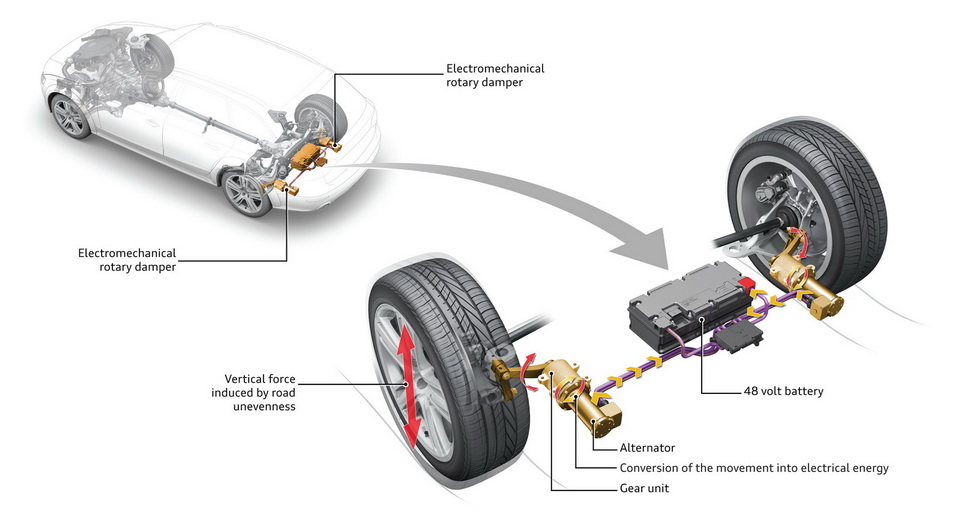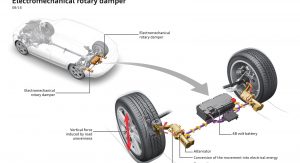Audi revealed it’s working on a prototype damping system called ‘eROT’, in which electromechanical rotary dampers replace the traditional shock absorbers used today for more comfort and added energy recuperation.
Yes, that means that future Audis will be able to harvest energy from things like potholes and winding roads, energy that is currently lost in the form of heat in today’s cars.
“With the new electromechanical damper system in the 48-volt electrical system, we put this energy to use”, said Dr.-Ing. Stefan Knirsch, Board Member for Technical Development at Audi. “It also presents us and our customers with entirely new possibilities for adjusting the suspension.”
Converting kinetic energy during compression and rebound into electricity happens thanks to a lever arm that absorbs the motion of the wheel, sending the force via a series of gears to an electric motor which converts it into electric power. The company estimates that the recuperation output is 100 to 150 watts on average during testing on German roads, starting from 3 watts on a freshly-paved freeway to 613 watts on a rough B-road.
Audi also claims that the actively controlled eROT system offers superior comfort as its horizontally arranged electromechanic dampers eliminate the mutual dependence of the rebound and compression strokes that traditionally limit the conventional hydraulic shock absorbers. The new tech allows for the compression stroke to be configured in soft without compromising the taut damping of the rebound stroke.
And the horizontal orientation of the system frees up space compared with the upright telescopic shocks, allowing more space for the luggage compartment. Audi believes that the new suspension technology will find its way into their future models, with the only prerequisite being the car being equipped with the 48-volt electrical system, which can be found in the latest Audi SQ7.
Expect to find it in Audi’s future hybrids, plug-in hybrids and full electric cars as the company is known for working full time on electrifying their range of products.









